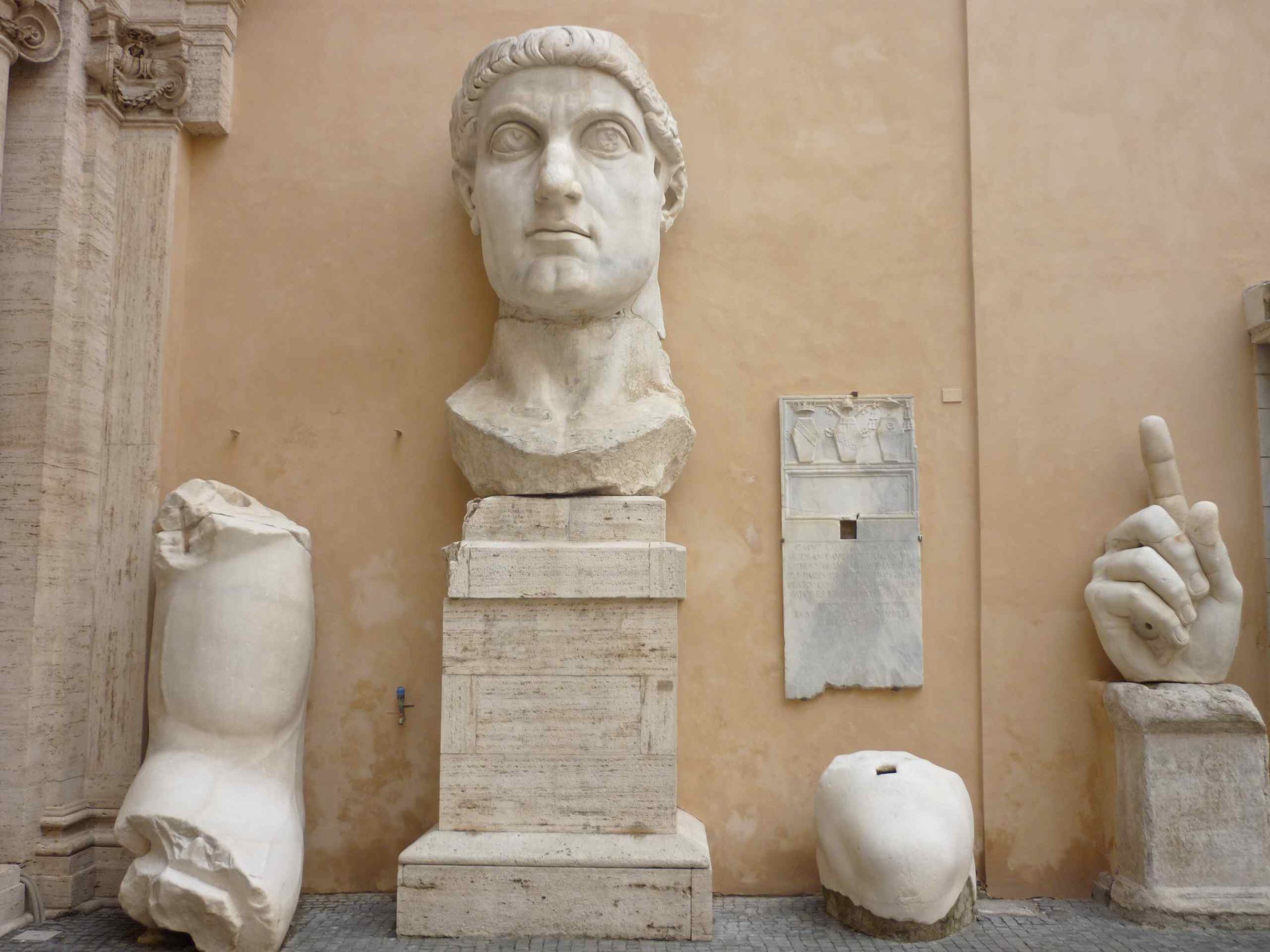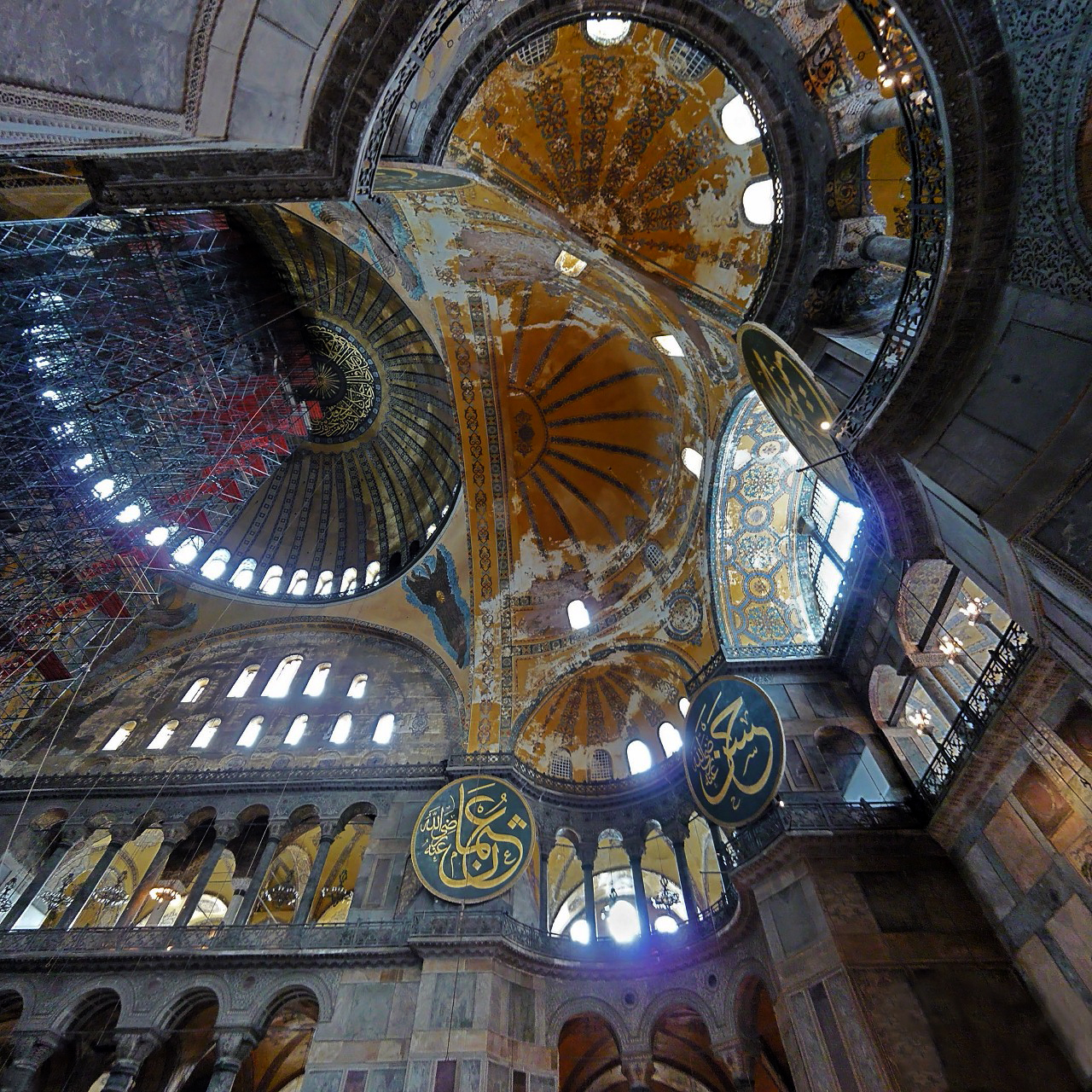TRUE STORIES OF BLOOD, TREASURE AND CONQUEST FROM THE CITY OF THE WORLD'S DESIRE.
In 2014, Richard Fidler and his son Joe made a journey to Istanbul. Fired by Richard’s passion for the rich history of the dazzling Byzantine Empire – centred around the legendary Constantinople – we are swept into some of the most extraordinary tales in history. The clash of civilisations, the fall of empires, the rise of Christianity, revenge, lust, murder. Turbulent stories from the past are brought vividly to life at the same time as a father navigates the unfolding changes in his relationship with his son.
GHOST EMPIRE is a revelation: a beautifully written ode to a lost civilisation, and a warmly observed father-son adventure far from home.
The Columns of Constantinople (from L to R) the Column of Constantine, Obelisk of Thutmose III, the Serpent Column and the Column of Justinian. All except the last still stand in modern-day Istanbul (Wikimedia Commons).
19th century photograph of the Hagia Sophia (wikimedia commons)
The Indian Door of the Hagia Sophia (photo by the author).
GHOST EMPIRE Media
A conversation on Ghost Empire with Geraldine Doogue on ABC Radio National's Saturday Extra is here.
Scott Stephens, co-host of the The Mine Field (as well as being the ABC's Religion & Ethics Editor) interviewed me for the better part of an hour:
Lawrence Osbourne gave Ghost Empire a kind review in the New York Times, alongside Bettany Hughes's book Istanbul, here.
The Sydney Morning Herald review is here.
Vrasidas Karalis, professor of Modern Greek and Byzantine Studies at the University of Sydney is a former guest of my radio program. He wrote a really lovely review for Neos Kosmos here.
Sally Pryor interviewed me for the Canberra Times here.
An author Q&A at the Better Reading website is here.
The ruin of the Golden Gate at the Theodosian Walls (photo by the author).
Mosaic from the floor of the Great Palace of the Caesars. Now on display at the Mosaic Museum, Istanbul.
A List of Recommended Books
on the Riotous, Bloody Mess that is the Middle Ages
The World of Late Antiquity, by Peter Brown
Peter Brown, with this hugely influential and beautifully written book, changed the way we see the crucial period between the decline of ancient Rome and the sudden emergence of the Arab empire in the mid seventh century. Previously, western historians had presented this transitional period as a slow and sad winding down of the glory of Rome. But seen from the point of view of people living in Byzantium, Persia and Arabia, it was a time of invention and renewal, when the pulse of culture and conquest started to quicken. I adore this book.
The Alexiad, Anna Comnena
Anna Comnena is one of my favourite people of the medieval world. Born in Constantinople as the daughter of Emperor Alexius Comnenus, Anna received a first-class education and administered a hospital for women, where she lectured in medicine. Anna hoped to succeed her father, but when the throne passed to her little brother instead, she plotted to overthrow him. The scheme was discovered and Anna was sent to live in a convent in the city. She passed her days by writing a colourful history of her father's reign known as The Alexiad, and in doing so became the world's first female historian.
I was introduced to the sagas by my friend Kari Gislason, an Australian writer born in Iceland. Kari thinks these are the greatest stories ever written and I'm inclined to agree with him. The sagas are the stories of the first Viking families who settled on that remote island in the early Middle Ages. They contain tales of love, death, power and revenge that were told for centuries until they were written down on calfskin vellum in the thirteenth century. The Viking men and women of the sagas say and do extraordinary things, but the authors never tell us what they're thinking. I've read some of these rich stories many times over, and they never fail to move me. It now seems like a miracle that such a remote, sparsely populated island could give birth to one of the world's great storytelling cultures.
Justinian's Flea: Plague, Empire and the Birth of Europe, by William Rosen
Rosen gives us a vivid account of the outbreak of the plague during the reign of Justinian. Yersinia Pestis - a germ hiding inside the gut of a flea, perched on the fur of a rat - was unknowingly ferried by ships from Egypt to Constantinople in 542 AD. In just ten days the Queen of cities was utterly transformed into a Walking Dead hell-scape; its streets choked with bloody corpses, too numerous to bury. In four months Constantinople lost nearly half its population. The emperor himself fell sick, but was one of the few who recovered. Rosen shows us the workings of the plague, and the terrifying lack of moral logic to its work; the good and the wicked, the young and the old, the rich and the poor alike fell victim to this nightmare, which seemed to be a punishment from God for their sins.
The Last Byzantine Renaissance by Steven Runciman
I found a copy of this hard-to-find little book in a second-hand bookshop on Charing Cross Road in London. Amazingly, even as Byzantium entered its final painful century, it experienced a burst of spiritual and artistic creativity. The Orthodox church adopted the practice of hesychasm, a form of almost Buddhist-like Christian meditation. Meanwhile a minority of scholars and artists turned their backs on mysticism and embraced the new spirit of rationalism and humanism that was also beginning to flicker into life in the courts of Italy. The partnership between the scholars of Constantinople and those in Venice and Rome would soon ignite the fires of the western Renaissance.
A History of Venice, by John Julius Norwich
This is a stupendous volume which follows the long story of the Most Serene Republic of Venice, from its humble origins as a trading outpost in a marshy lagoon to its glorious apogee as a major mercantile and naval power, to the ignominious end of its independence at the hands of Napoleon. Norwich explains how the city was founded by frightened merchants and families, hoping to evade the ravages of Attila the Hun, by making a new life for themselves on the islets of the lagoon where Attila's horsemen were reluctant to follow.
The Secret History, Procopius.
Procopius might be the bitchiest historian from the medieval world. He was born into an aristocratic family in Constantinople and served at the court of Justinian and Theodora. The high-born Procopius detested both these upstarts with every fibre of his being: Justinian was the adopted son of a pig farmer, and Theodora was the daughter of a bear-keeper from the Hippodrome. But like everyone else, the snobbish Procopius was obliged to publicly bend the knee to the ruthless imperial couple. Procopius wrote several respectful official histories, but at night he furtively poured all his bile into a document known to us as The Secret History. In page after page he records the Emperor's every wicked deed, both real and imagined. Justinian is portrayed as a demon, able to detach his own head and go wandering about the palace late at night. Theodora is depicted, in the way that powerful Roman women so often were, as sexually insatiable, and he recounts her public performance of an erotic parody of Leda and the Swan, where geese were trained, allegedly, to pick breadcrumbs from her private parts. The Secret History lay forgotten in the Vatican Library for centuries. Its publication, more than a thousand years after the events recorded, titillated and scandalised Europe.
Millennium by Tom Holland
Tom Holland's hugely enjoyable account of Europe in the eleventh century begins with the dawning (and for many, disappointing) realisation among the Christians of Europe that the world would not come to an end after all. Set against the glittering empires of Byzantium and Arabia, western Europe seemed the least likely candidate for future greatness. But as the millennial doom-mongering began to dissipate, it was replaced by a flickering sense that a new era was about to begin.
The Silk Roads: a New History of the World, by Peter Frankopan
This is a book that delivers on the bold and ambitious claim embedded in its title. Peter re-directs the focus of world history to the famous Silk Roads, the interconnected networks of trade and culture that brought Europe into the orbit of the fabulously rich and cultured societies of Asia. He shows, for example, how the Taj Mahal was funded by the plunder of gold and silver from the Americas, traded for Indian textiles and spices. Peter’s book beautifully explains the interchange of ideas and practices between Christianity, Buddhism, Islam and Zoroastrianism in the early Middle Ages. I had the pleasure of interviewing Peter about this important book in 2016.

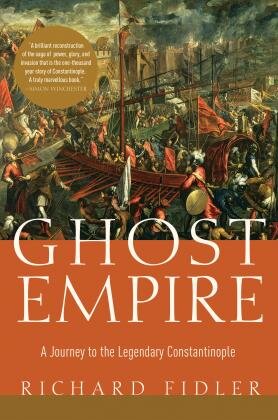
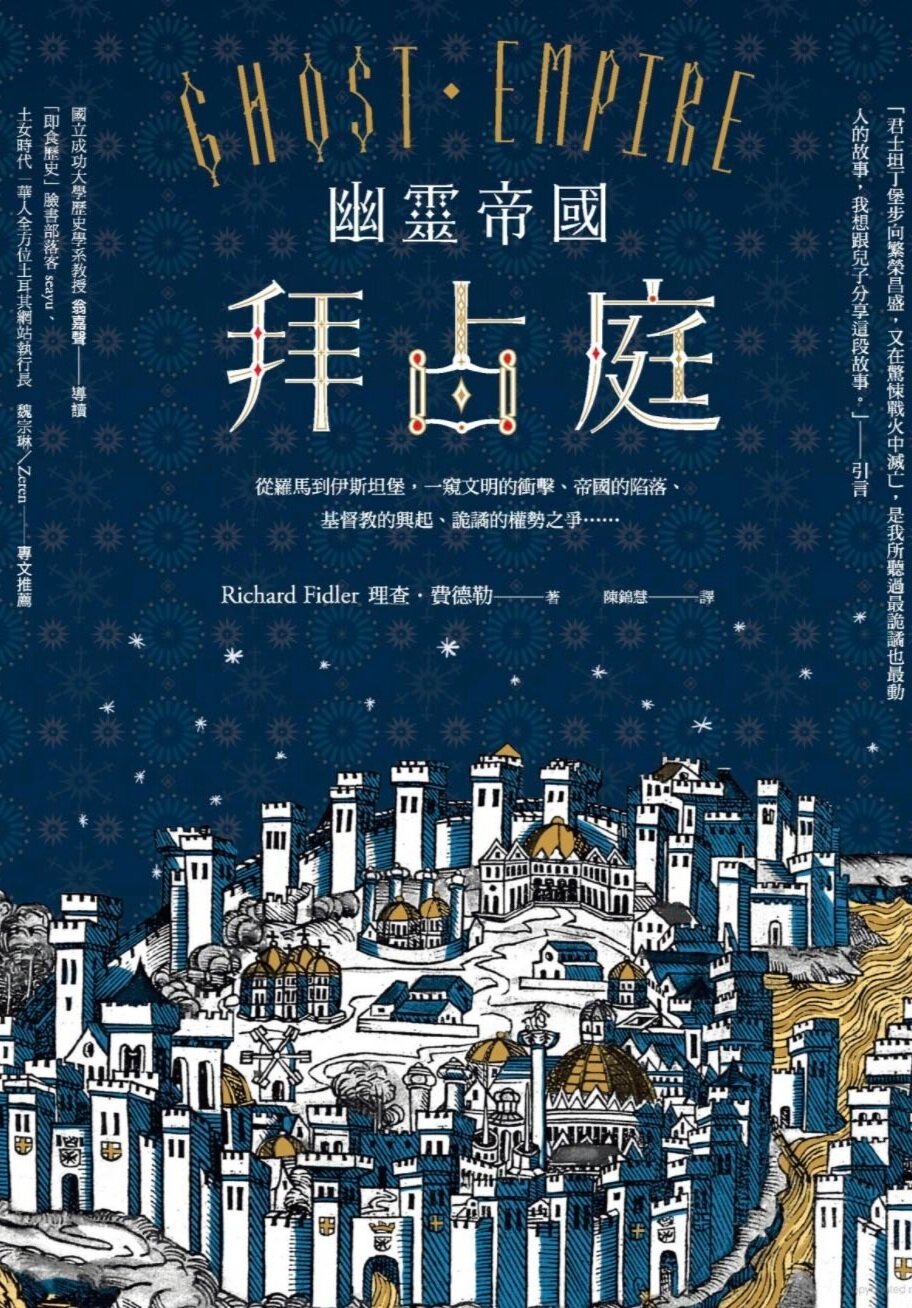
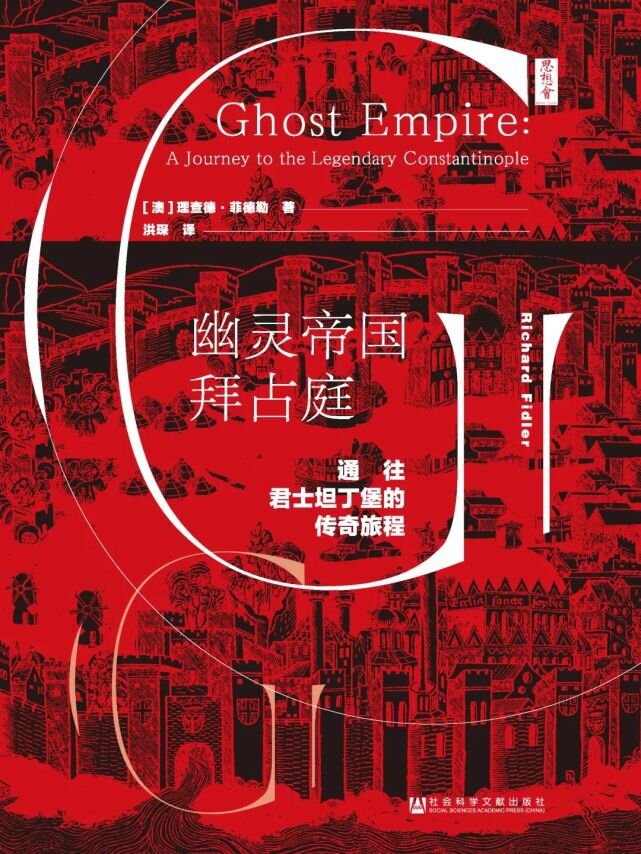
RADIANT CITY
A THOUSAND YEARS AGO, Constantinople was by far the greatest and richest city in Europe. It dwarfed its rivals in size, splendour and sophistication. The city contained half a million souls, more than ten times the population of London or Paris.
At a time when western Europe was ensnared in a dark age of poverty and illiteracy, the people of Constantinople enjoyed the pleasures of the metropolis: they bought exotic goods in the marketplaces of the city’s great marbled squares and cheered for their teams at the Hippodrome, the world’s biggest stadium.
Students attended universities and law academies. There were schools for female education and hospitals with women doctors. The city’s libraries conserved precious manuscripts by Greek and Latin authors, ancient works of philosophy, mathematics and literature that had been lost or destroyed elsewhere.
CONSTANTINOPLE WAS THE GREATEST wonder of its age. It was an imperial capital, an emporium, a shrine and a fortress. Venetian merchants arriving after a long sea voyage would see the gold and copper domes of the skyline appear out of the Bosphorus fog like a hallucination. First-time visitors were stunned by the monumental scale and beauty of the city.
Traders came to Constantinople from all over Europe, from Asia and Africa. Russian galleys cruised down from the Black Sea, laden with fish, honey, beeswax and caviar. Amber was brought from the shores of the Baltic Sea to be exchanged for gold or silk. Spices from China and India were carried overland into the city and sold on to western Europe.
THE CITY WAS ALMOST SUPERNATURALLY BEAUTIFUL. Visitors from western Europe could find nothing on Earth to compare it to, describing it in their letters as ‘the all-golden city, ‘a second firmament’.
HEAVENLY CITIES, doomed emperors, robotic trees, Crusaders, saints, floating nuns and the ever-looming apocalypse – it was this rich stew of stories that had brought me to Istanbul with Joe. In the Hagia Sophia we saw Viking graffiti and a tombstone dedicated to the city’s worst enemy. We entered the ancient city’s dark underworld, saw the melancholy ruin of the Golden Gate, and we walked the entire length of the legendary Theodosian Walls of Constantinople, from the Sea of Marmara to the Golden Horn. It was there that the Eastern Roman Empire held its dramatic last stand in 1453 when the Ottoman Turks arrived with a new weapon of war, capable of shattering the city's ancient defenses.
GHOST EMPIRE brings the forgotten story of the lost capital of Byzantium into life, with some of the most extraordinary tales in history: turbulent stories of the clash of civilisations, the fall of empires, the rise of Christianity, and the catastrophe that finally came for them at the end of the Middle Ages.
A map of Constantinople from Ghost Empire (The Church of St Saviour in Chora is misplaced, unfortunately, which was corrected in later editions).
“During this time, the cantors intoned a most beautiful and astonishing chant, surpassing understanding. The imperial cortege advanced so slowly that it took three hours from the great door to the platform bearing the throne … Ascending the platform, the Emperor put on the imperial purple and the imperial diadem and the crenated crown … Who can describe the beauty of it all?”
“With this extraordinarily ambitious book, Richard Fidler throws himself into telling one of the world’s great stories ... this complex account is so vividly and thrillingly related. Fidler has a knack for cutting, weighty observation, at once light yet loaded with meaning and emotion.”
““Thanks to the stylish cleverness of an exceptionally curious and talented man, we can feast on what strange magic the city brought - and still brings today - to the world beyond. I am speechless with admiration.””
Remnants of a colossal statue of the Roman emperor Constantine the Great, founder of the city, in the courtyard of Rome's Capitoline Museum (photo by the author).
The central dome and supporting pendentives of the Hagia Sophia, Istanbul. Constructed in the reign of Emperor Justinian in an astonishing five and a half years (wikimedia commons).
View of the legendary Theodosian Walls of Constantinople through a turret window (photo by the author).
A stretch of the Theodosian Walls, near the Charisian Gate. Only the high inner wall still stands; the outer wall was shattered by the cannons of the Ottoman Turks in the final siege of 1453 (photo by the author)..
The Hagia Sophia (photo by the author).
The site of the Roman Hippodrome - the largest sporting stadium of the Middle Ages - in modern day Istanbul. The Hippodrome's (now destroyed) terraced stands could hold up to one hundred thousand spectators. The ancient columns are still in place (photo by the author).
Mosaic of Emperor Justinian with his generals and courtiers, Church of San Vitale, Ravenna (wikimedia commons).
Complementary mosaic of Empress Theodora with her attendants, which faces her husband's mosaic in San Vitale. The empress carries the chalice for the communion wine. Justinian bears the basket for the bread (wikimedia commons).




















